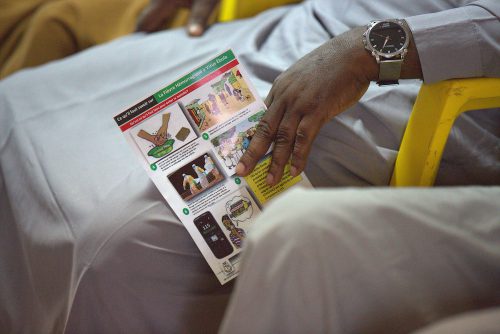Professional Anthropology

In this unit, students will learn about the ways trained anthropologists use their skillsets outside of an academic setting. They will read about and discuss different career paths, how anthropologists are bridging work in higher educational institutions with projects beyond traditional settings, and how anthropological training can support work in other industries and careers. Finally, students will be able to take stock of their own skills as anthropologists in training and consider how they might apply them in the future.

Can Social Scientists Help Control Epidemics?

Can Indigenous Language Comics Save a Mother Tongue?

Best of SAPIENS 2024

How Colonialism Invented Food Insecurity in West Africa

Protecting Ancestral Waters Through Collaborative Stewardship

Grappling With Guilt Inside a System of Structural Violence

Living as Stateless Palestinians in Jordan

Best of SAPIENS 2023
- Most people with an advanced degree in anthropology do not end up teaching in academia.
- Anthropological training can be applied in many different professional sectors. A few examples are: conservation, international development, disaster intervention, technology, communications, and arts and culture.
- Skills such as conducting research, understanding society and culture on a macro and micro scale, synthesizing data, and carrying out ethnographic work are in high demand.
- Different terms are used to refer to people with anthropological training who work with a broader public. Three of the most common are: applied anthropologist, practicing anthropologist, and professional anthropologist.
- An applied anthropologist functions from an academic base and conducts research intended to effect change.
- A practicing anthropologist uses anthropological skills in the workplace but may not be called an anthropologist in their position.
- A professional anthropologist actively uses their skills and generally calls themselves or are called an anthropologist in the wider world.
-
Cronin, Shannon, and Erica M. Hawvermale. 2021. “‘Applying’ Education: A Focused Review of the 2019 American Anthropology Master’s Career Survey Data.” Annals of Anthropological Practice 45 (1): 119–135.
-
Fiske, Shirley J., and Judith N. Freidenberg. 2018. “Introduction: Where Is Practice in Practicing Anthropology?” Practicing Anthropology 40 (1): 2–17.
-
Hyland, Stanley E., and Linda A. Bennett. 2013. “Responding to Community Needs Through Linking Academic and Practicing Anthropology: An Engaged Scholarly Framework.” Annals of Anthropological Practice 37 (1): 34–56.
- What are the histories of the terms “applied,” “practicing,” “professional,” and “public interest” anthropology?
- What does “practicing” anthropology mean to Fiske and Freidenberg?
- What is the difference between applied, practicing, professional, or public interest anthropology? Provide an example for each field.
- What is the central argument of the Cronin and Hawvermale piece? What do you think of their suggestions for change?
- Which of the examples presented in the Hyland and Bennett piece seem most interesting to you? What principles guide their framework?
- Go through two SAPIENS articles and make a list of the skills anthropologists are using to effect change in their respective fields. Do any of them surprise you?
- Have students research professionals with anthropology degrees who currently work in applied fields.
- Have students select a career outside of academia and consider how their anthropological training might be used as an asset in that position.
- Encourage students to look through The Toolkit of a Good Professional Anthropologist and think about what skills they currently have, which ones they would like to develop, and what skills would be helpful in a job or career they would like to have.
-
Website: The National Association for the Practice of Anthropology’s The Toolkit of a Good Professional Anthropologist
-
Website: The American Anthropological Association’s Careers in Anthropology
-
Website: Career Readiness Commission
-
Website: Society for Applied Anthropology
Eshe Lewis (2022)
Anthropological Poetry
